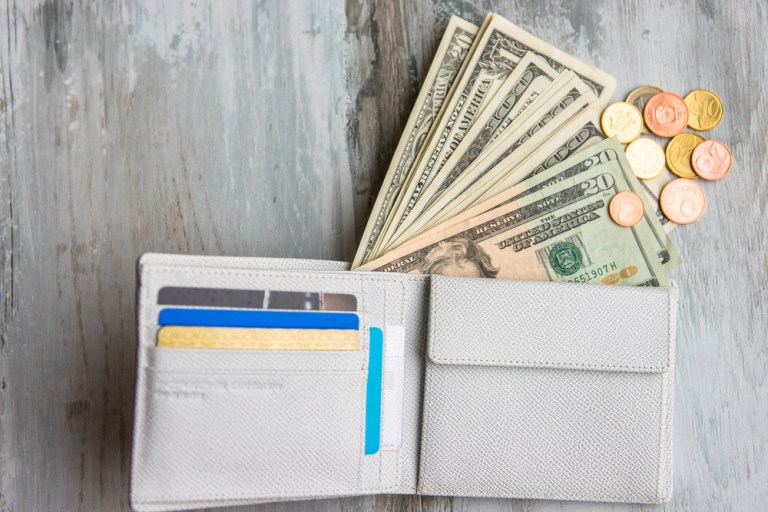
From digital to plastic … and back again, with cash in hand or wallet or digital wallet to boot. PayPal has announced a cash back card with Mastercard. The push into payments in-store shows a bit of truism to the maxim what’s old is new again. PYMNTS caught up with Zach Knox, PayPal’s director of Credit Card Programs, to get a sense of how digital and plastic can go hand in hand.
Plastics, someone whispered to a fresh-faced Dustin Hoffman in “The Graduate” 50 years ago. The wave of the future.
And so might it be for PayPal. At least in part.
The global digital payments network, which made waves 19 years ago when it launched as a digital way to pay online, announced news on Wednesday that it is debuting its PayPal Cashback Mastercard, created in partnership with Synchrony Financial.
The headline terms of the card? Users get 2 percent cash back on each purchase made using the credit card. Cash back is funneled back to PayPal accounts. The cash rewards can be held in reserve to spend on other items or services, or, alternatively, those funds can be transferred directly into users’ bank accounts.
The push to plastic may seem incongruous for a company that made its name in online commerce. But in an interview with PYMNTS, Zach Knox, director of Credit Card Programs at PayPal, illustrated that the credit card is the latest salvo in PayPal’s drive to be a conduit for financial transactions across the online and in-store spectrum.
Knox recounted that the relationship between PayPal and Synchrony Financial traces its genesis to 2004, with a points-based cash rewards card issued in 2006. That point-based system held sway in credit card markets in the mid-2000s, said Knox, and then the market evolved, moving on to embrace cash back.
Surveying customers in 2015 and then again earlier this year, PayPal found that an overwhelming number of consumers had cash back or cash back-equivalent cards in their wallets. “They would have a cash back card as ‘top of wallet,’ if they had a choice,” he told PYMNTS, “so we knew that we had to do a refresh.”
The 2 percent cash back rate, stated Knox, is a relatively rich one in the credit card pantheon. The executive said that in his own point of view, the feature can be seen as a democratization of rewards, with no annual fee or spending confines. PayPal’s premise, he said, is that those features should be available to as many people as possible and across everyday spending activities and should not just be geared toward people with high FICOs or who spend a lot of money.
As such, when asked whom is being targeted in promoting the new card, Knox replied, “We are actually targeting our entire base” domestically, as the PayPal Cashback Mastercard is being rolled out across the United States and Puerto Rico, he told PYMNTS.
Asked about the lure of cash back in general, Knox noted that the credit card realm is marked by a myriad of points-based rewards programs. The highest spend on those cards tends to be in the travel and entertainment space, typically across airline or hotel cards, where points can be redeemed for those services.
Other cash back cards have parameters in place, with cash back returns based on dollar amounts spent, for example, or that require balances to be paid off before cash accrues.
One evolution, Knox said, has taken shape across everyday spend and has also helped shape the card that debuted Wednesday. People, he said, have embraced the idea of having the flexibility to choose — and, with rewards, should not be limited to receiving rewards tied to certain merchandise or services, while having no idea what the earn rate (or conversely, burn rate) might be in terms of those same rewards.
Cash, of course, has complete flexibility in how it is used and is transparent, he pointed out. And cash back, using the card debuting Wednesday, he said, has the value of being both digital with PayPal or being deposited into a traditional bank account. In addition, Knox said the card provides additional security features, including extended warranty coverage and identity theft resolution assistance.
Moving beyond the button, so to speak, Knox said, is also a long-term PayPal goal, as offerings transverse debit and credit, digital wallets and tangible cards.
He said the new Mastercard is akin to having “PayPal in your pocket” in tangible form and in digital form (the accounts are automatically added to members’ PayPal wallets), with a nod toward PayPal as options in Samsung Pay and Android Pay. The cards represent a further entry point into the in-store and the brick-and-mortar world, he said.
There’s also a benefit to the larger PayPal ecosystem, he said, as the cash back rewards which accrue to the PayPal account may spur users to spend that balance at participating PayPal merchants.